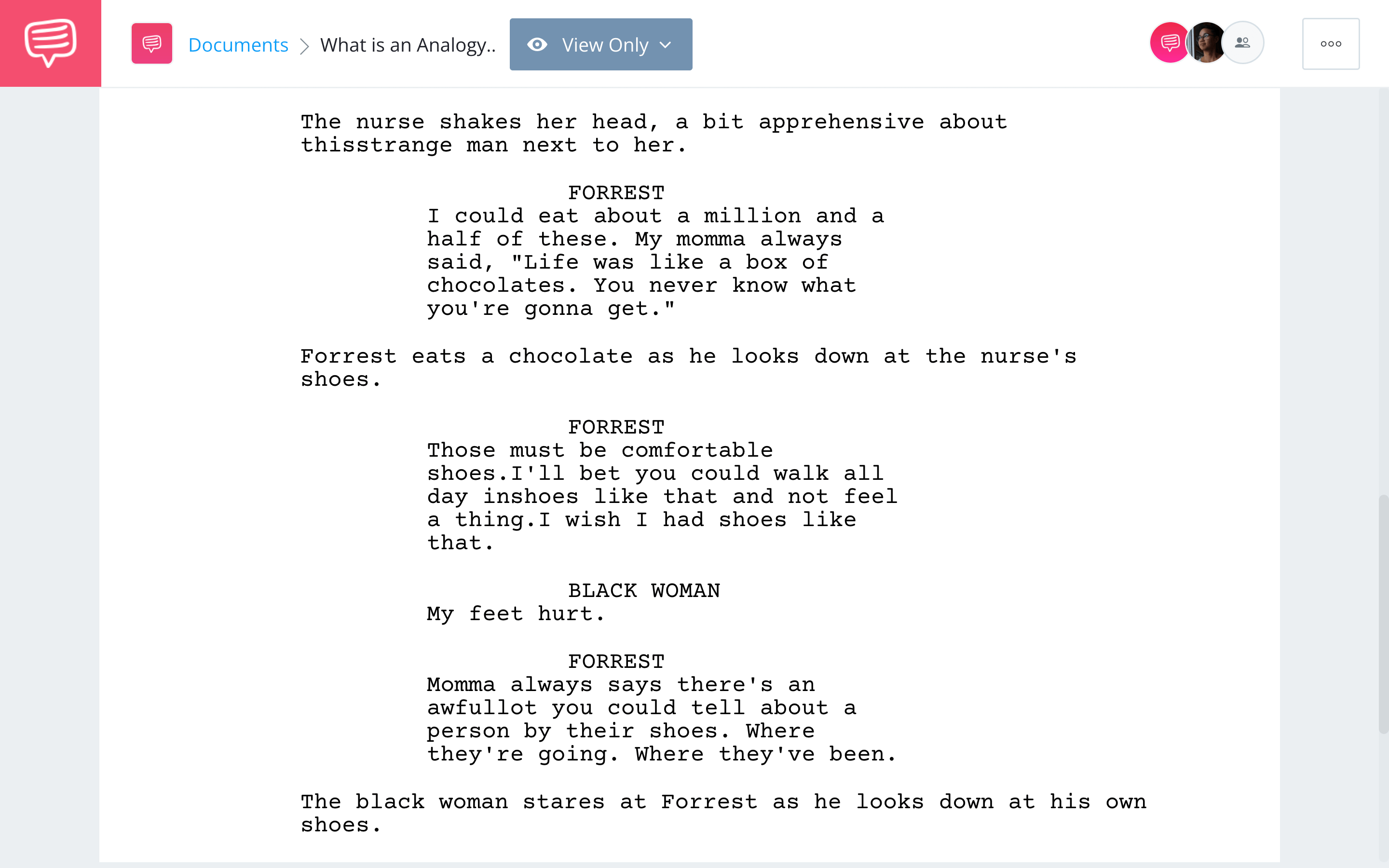All writers aim to engage their audience. And to engage their audience, their writing must be effective. So what are the tricks of the trade to effective writing? There are various elements to great writing, but two fundamental elements are clear communication of ideas and conciseness. One of the best tools a writer has to achieve both is analogy. In this article, we’ll define analogy and distinguish it from other literary devices. We’ll also take a look at some analogy examples in some of the most iconic lines in literature and film and how it has contributed to both.
What is Analogy in Literature
First, let’s define analogy
Analogies have an overlap with other literary devices such as metaphors and similes. To better distinguish analogy, let’s take a look at the analogy literary definition.
ANALOGY LITERARY DEFINITION
What is analogy in literature?
An analogy is a literary device used to compare similarities between two unrelated things as a way to make a point through the comparison. Analogies are primarily used to identify similar relationships or to identify similar abstractions between two things or ideas. Analogies are often mistaken for similes and metaphors. While they are similar, analogies differ in that they aim to make a logical argument by showing similarities between two dissimilar things. Analogies can utilize similes or metaphors but are further elaborated on to support in argument or claim.
What is analogy used for?
- Creating a persuasive argument
- Making abstract ideas more concrete
- Relating to the audience or reader
What Does Analogy Mean in Literature?
Analogy vs. Metaphor vs. Simile
An analogy is often mixed up with other literary devices like metaphors and similes. Although they all share similarities to one another in that they compare two unlike things, they differ in specific ways.
Analogy
- Creates a relationship based on similarities between two ideas
- Generally a longer comparison, more than a sentence
- More elaborate or extensive than a simile
Simile
- Compares two objects with connecting words
- Generally a shorter comparison, like in a single sentence
- More simple and basic than an analogy
Similes compare the similarities between two unlike things using the words “like” or “as.” For example, “Life is like a mountain.”
A metaphor is a literary device used to say something is something else. It allows the reader to do further interpretation. For example, “Life is a mountain.”
An analogy is a comparison between two things with the goal to make a larger point. For example, “Life is like a mountain. Hard to climb, but the view at the top is worth it.” This further explanation, stated or not, is what distinguishes an analogy. Metaphors and similes can be used within an analogy to drive the point home.
ANALOGY MEANING IN LITERATURE
What is analogy used for?
It is not uncommon for writers to find difficulty in communicating ideas both abstract and literal to their audience. Learning how to write analogies will help you as a screenwriter tackle these obstacles. Communicating these ideas effectively can be the difference in writing an engaging novel, a persuasive argument, or an effective explanation.
1. Support an argument
In forms other than traditional literature such as essays, critiques, or analyses, analogies can be an effective tool at making a persuasive argument. This is often used in counter arguments to negate the logic of another claim.
2. Make abstract concepts relatable
One of the more difficult tasks writers have is being concise when explaining or communicating abstract ideas. Analogies can be extremely effective at making abstract ideas more concrete. They do this by including something relatable within analogies that audiences can understand and latch onto.
For example, the idea of raising a child is rather large and abstract. Let’s take a look at an example that can explain what raising a child is like using something relatable. “Raising a child is like gardening. It takes both patience and practice.” By using gardening within the analogy, readers can better understand what the author is trying to say about parenting.
3. Add depth to imagery and emotions
In literature, analogies are commonly used to add depth to the imagery of the story. Literal writing has its own limitations that can inhibit an audience's emotional connection to a piece of writing. Analogies address this by relating to the user’s experience to have them better understand the imagery or emotions of the story.
For example, to say “He loved her very much” is ineffective at communicating the affection a character has for another person. But using analogies and saying “His love for her was as vast and deep as the ocean itself” can better communicate this love because of the reader’s ability to relate to the imagery of the ocean.
Related Posts
Analyzing Analogy Examples
Analogy examples in literature
To analyze how analogies are effective at communicating higher concepts effectively and concisely, let’s take a look at William Shakespeare’s iconic Romeo and Juliet. In this moment in the play, Juliet comes to the conclusion that the names Montague and Capulet are irrelevant. No matter the name, Romeo is still the same person, and that’s what matters.
To put this more poetically and in a way that is more relatable, Shakespeare uses an analogy comparing Romeo to a rose.

‘Tis but thy name that is my enemy;
Thou art thyself, though not a Montague.
What’s Montague? It is nor hand, nor foot,
Nor arm, nor face, nor any other part
Belonging to a man. O, be some other name!
What’s in a name? That which we call a rose
By any other name would smell as sweet;
So Romeo would, were he not Romeo call’d,
Retain that dear perfection which he owes
Without that title. Romeo, doff thy name,
And for that name which is no part of thee
Take all myself.”
— William Shakespeare
The analogy is able to compare a rose, its smell, and its name to Romeo, his character, and his name. Not only does this make the speech romantically poetic, it effectively communicates an abstract idea in a concise, relatable way.
Related Posts
What Does Analogy Mean in Cinema
Analogy examples in film
Analogies are used beyond the realm of literature. In filmmaking and screenwriting, analogies are used similarly to communicate ideas in less time. Time is a valuable resource when it comes to film, and using analogies can be effective at saving this resource.
One of the most iconic lines in all of cinema is in fact an analogy. It’s none other than the quote about life from Forrest Gump script. We brought the screenplay into StudioBinder's screenwriting software so you can read how this iconic analogy is written on the page. Click the image below to read the entire scene.
Forrest Gump • Life is Like a Box of Chocolates analogy examples
In one of the most iconic lines in cinema, Forrest (or rather Forrest’s mom) compares life to the unpredictability of a box of chocolates with the line “Life is like a box of chocolates. You never know what you’re gonna get.”
Not only does this foreshadow the plot that follows this specific line as it follows Forrest’s life, it establishes one of the film’s themes. The relatability and conciseness of this makes it easily memorable and iconic.
Related Posts
UP NEXT
What is a Simile? With Examples
One of the most common ways to create an analogy is by using a simile. What is the difference between simile and metaphor? How can similes be used other than in an analogy? We answer both of those questions and more in our next article.

